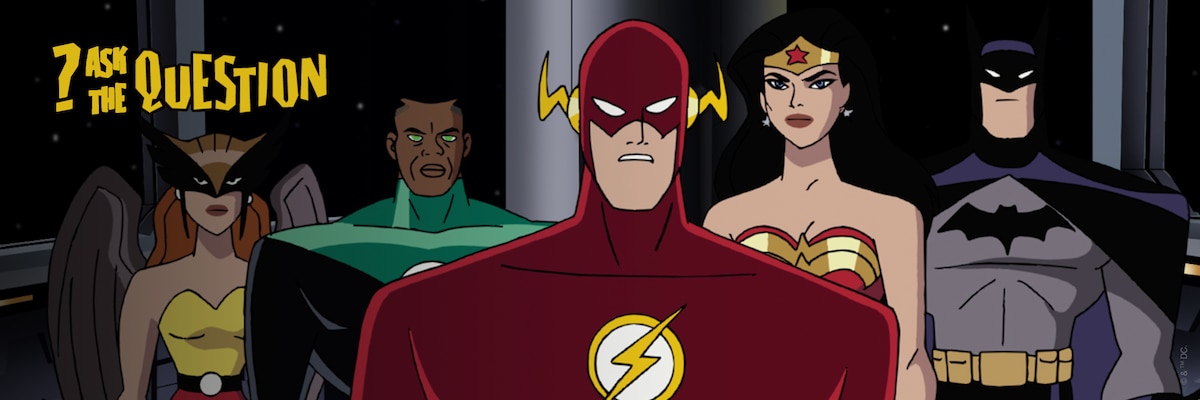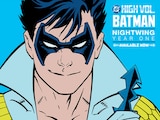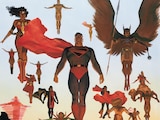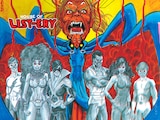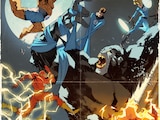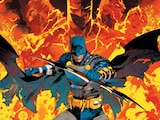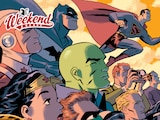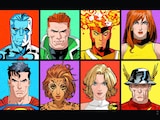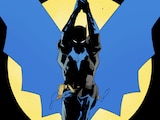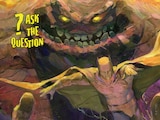Welcome back to another monthly edition of ASK…THE QUESTION, my pride and joy. I’m Alex Jaffe, but I’m known to our official DC Discord community as HubCityQuestion—holding court every day in the #ask-the-question channel where I attempt to give you all the answers you’ve ever wanted to your DC questions, to the very best of my personal ability. This monthly column is a roundup of some of the more interesting questions to have recently been brought to my door. So, let’s see what peculiarities we might uncover today.
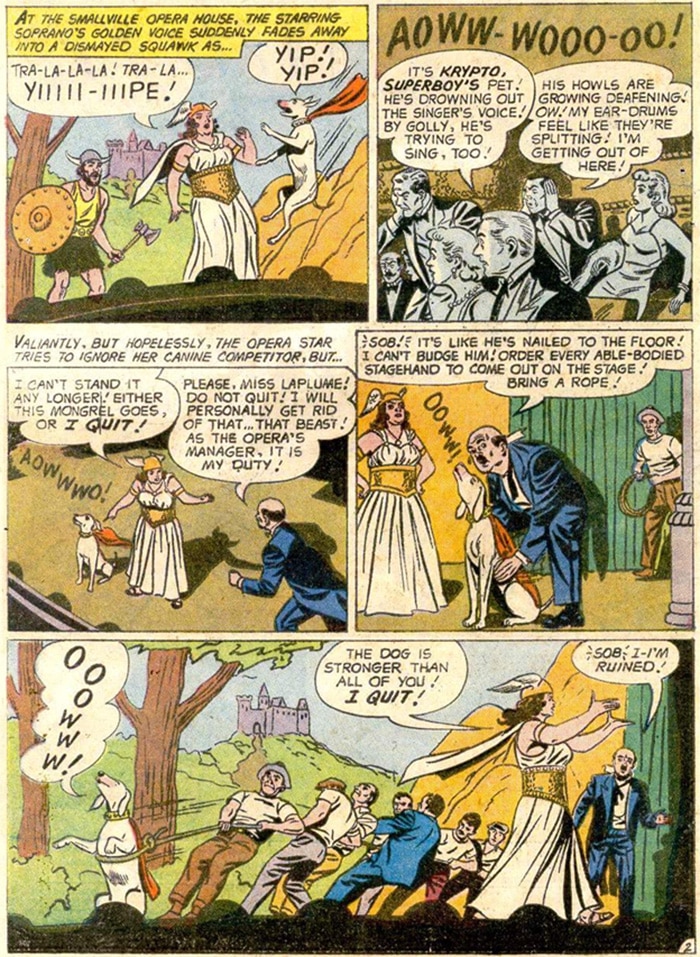
Rain asks:
What is the first time Krypto uses his Sonic Bark?
There’s really no way to know this other than to check every appearance of Krypto in sequential order, so that’s what I did. We first see Krypto barking at a supercanine volume in 1959’s Adventure Comics #266, “The Super-Pranks of Krypto.”
Souron1 asks:
When was Hawkgirl first referred to as Hawkwoman?
The first time Shiera Hall, Hawkman’s Golden Age counterpart, refers to herself as Hawkwoman is a one-off Hawkman story in 1941's Flash Comics #24. 1981's World's Finest #272 is where the Shayera of the Pre-Crisis Earth-One begins using the Hawkwoman title with consistency.
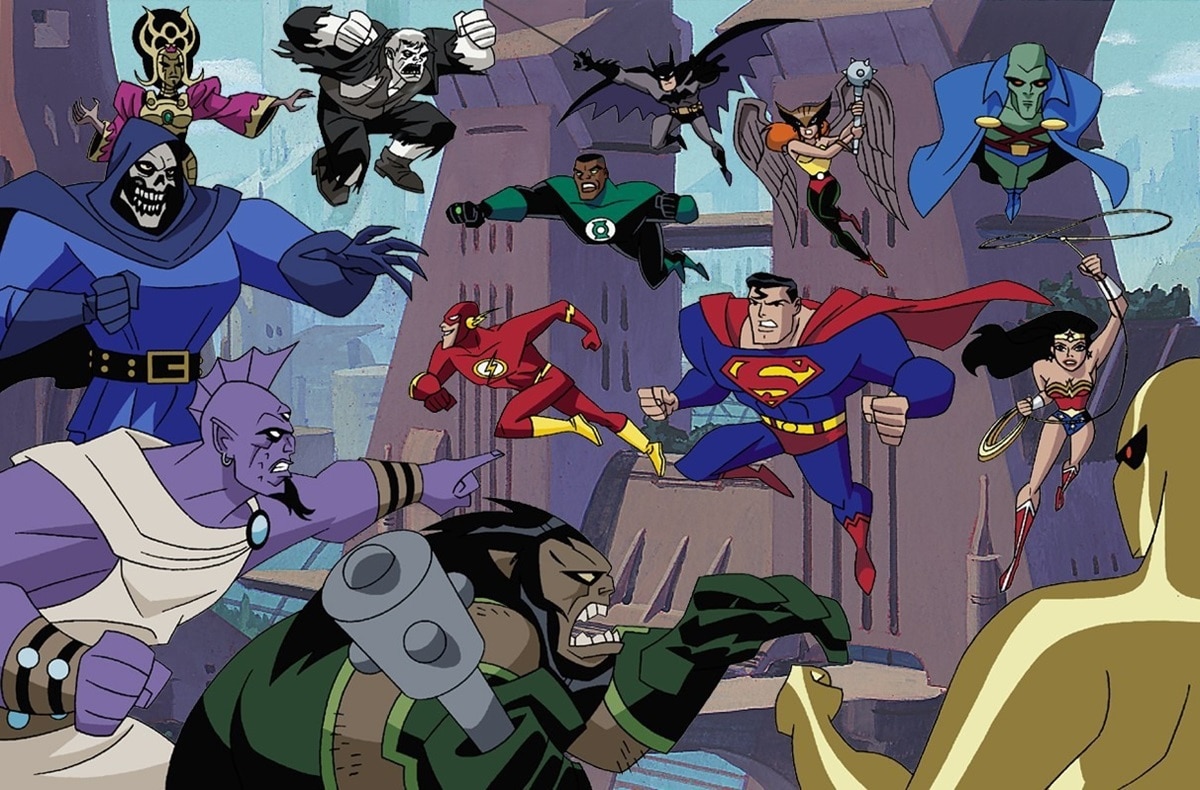
Lithose asks:
Who directed and wrote most of the DCAU? Both together and separately? Paul Dini? Dan Riba? Glen Murakami?
This is an interesting question, so I had to go check for myself. To calculate this, I set the parameters of the DC Animated Universe to include Batman: The Animated Series, Superman: The Animated Series, The New Batman Adventures, Batman Beyond, Static Shock, The Zeta Project, Justice League, Justice League Unlimited, Batman: Mask of the Phantasm, Batman & Mr. Freeze: SubZero, Batman: Mystery of the Batwoman and Batman Beyond: Return of the Joker. I left out webseries like Gotham Girls and Lobo, or any “tie-in” quasi-DCAU media released after Justice League Unlimited (i.e. Batman and Harley Quinn; Justice League vs. The Fatal Five), as their relevance to what is colloquially considered the DCAU is questionable. If the same person directed and wrote one of these projects, they were credited doubly for the Directing and Writing tally. Movies are counted for one credit, but multiple-part episodes are counted for each part, as they sometimes have different staff. While related, “Animation timing” credits were not counted as directing credits, and “Story by” credits were not counted as writing credits. (Note: Most episodes of Static Shock’s third season had no credited director, featuring at the time a more collaborative work process between animation timers.)
With all that in mind, here are the numbers:
Top Directors:
Dan Riba [82]
Butch Lukic [50]
Curt Geda [44]
Kevin Altieri [22]
Boyd Kirkland [22]
Joaquim Dos Santos [21]
Frank Paur [16]
James Tucker [10]
Top Writers:
Stan Berkowitz [53]
Paul Dini [41]
Dwayne McDuffie [39]
Rich Fogel [37]
Hilary J. Bader [33]
Robert Goodman [31]
Len Uhley [16]
Alan Burnett [10]
Michael Reaves [10]
Randy Rogel [10]
Christopher Simmons [10]
Top Combined:
Dan Riba [82]
Stan Berkowitz [53]
Butch Lukic [50]
Curt Geda [44]
Paul Dini [41]
Dwayne McDuffie [39]
Rich Fogel [37]
Hilary J. Bader [33]
Robert Goodman [31]
Boyd Kirkland [23]
Kevin Altieri [22]
Joaquim Dos Santos [21]
Interestingly, Glen Murakami was never credited as a writer or director on a single episode or film in the colloquial DCAU. Murakami was instrumental to many of these projects as a character designer, storyboard artist and producer, but never wrote or directed personally.
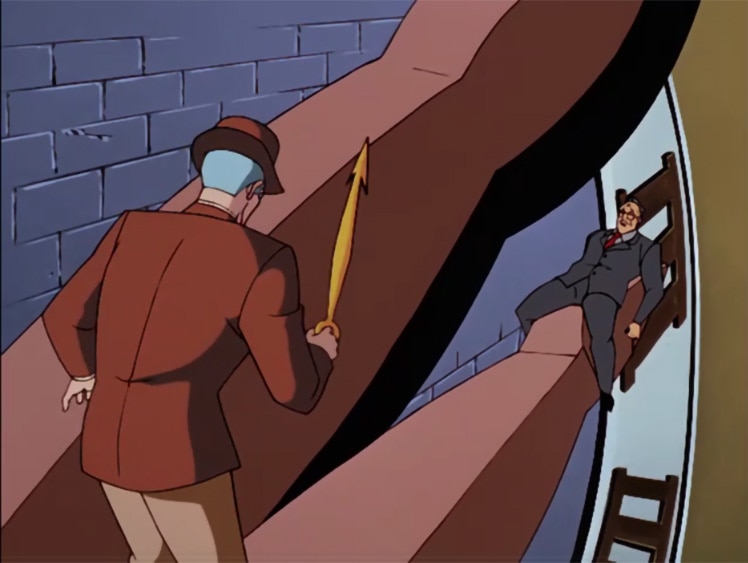
Scrooge mcduck asks:
In the Batman: The Animated Series episode that introduces Clock King, how would Mayor Hill get crushed at 3:15? How would a clock work if the hands run into each other?
A fine logistics question. Let’s take a closer look at the death trap Clock King rigged up for Mayor Hill in his debut episode in the image above.
As you can see, Mayor Hill’s body is wider than the hour hand he is stuck to. While the minute hand, unobstructed, might easily move past the hour hand, with Mayor Hill’s body occupying the space, it would crush him on the way. Ironic, as it would probably jam up the clock, giving everyone looking up at the tower the wrong time. If only Hill had explained that to him, maybe Clock King would have let him go.
Ecot1 asks:
I just read Teen Titans: Year One and I was wondering about Kid Flash's turtle. Does it have a name? Does it appear only in Teen Titans: Year One?
Wally's turtle isn't a mainstay of his normal appearances, but Wally does appear with a turtle once again in the 2008 DC Super Friends toy line tie-in comic series. It's never explicitly named in these comics, but the costume it wears in its Super Friends appearance suggests a connection to the Terrific Whatzit (aka Merton McSnurtle), a super-fast turtle who first appeared in DC's 1940s "Funny Animal" comic series Funny Stuff. His nephew, Fastback, would go on to become a member of Captain Carrot's Zoo Crew. Merton actually makes an appearance as one of the major supporting characters in the movie DC League of Super Pets, voiced by Natasha Lyonne.
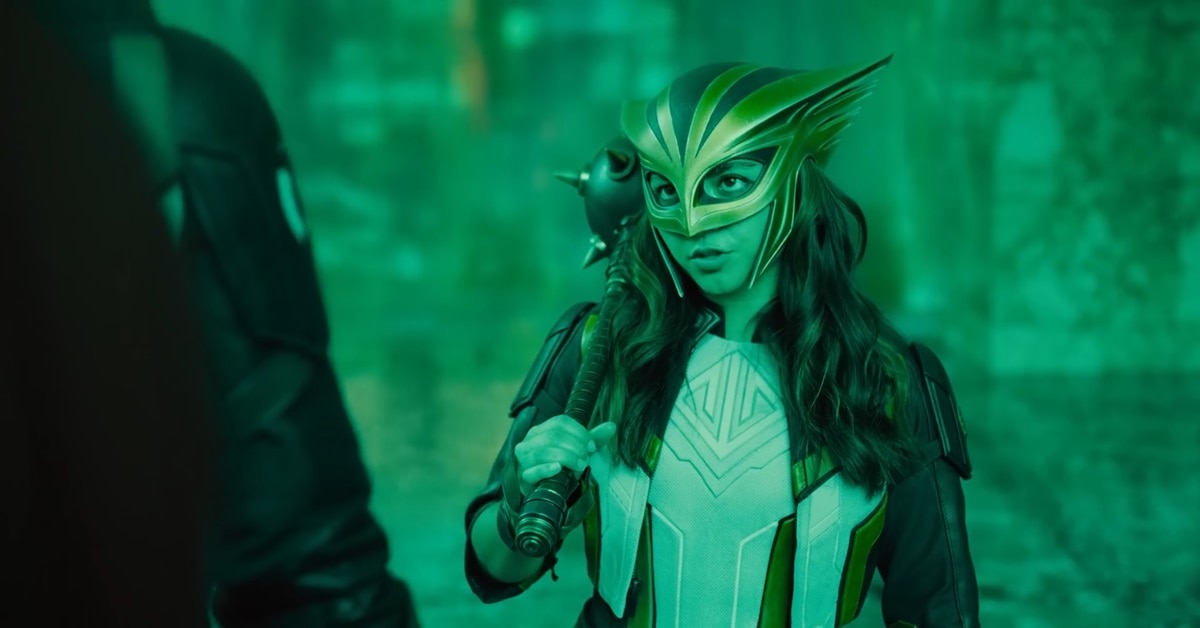
Lincolnfan78 asks:
In the new Superman movie, Hawkgirl does so much screaming, she reminded me of Black Canary. Does Hawkgirl really have a screaming ability? I don't remember seeing it in the animated Justice League series.
Hawkgirl’s sonic scream is an unprecedented original power in the Superman film, with one exception: it’s a power she also had in the 2006 video game Justice League Heroes. The recurrence here is probably a coincidence.
Khamass Pigeon asks:
Have Superman and Hercules ever interacted much in mainline continuity? Do they often fight when meeting each other or remain on friendly terms?
Hercules and Superman met for the first time in 1944’s Superman #28, when Superman goes back in time to discover that the real Hercules was just a regular Greek guy who was prophesied to manifest powers, but never did. Superman ends up performing the twelve labors for him, creating the myth of Hercules himself.
In the Silver Age, a more traditional Hercules appeared in Superman titles more frequently, often teaming up with Samson from the Bible on time-traveling adventures where they either enlisted Superman (or Superboy) for help, or occasionally competed with him for the affection of Lois Lane.
Superman and Hercules fight for the first time in 1960’s Action Comics #268, where Superman defeats him easily. Then, in 1965’s Action Comics #320, he defeats an evil Hercules, Samson and Atlas from an alternate dimension one at a time while Superman disguises himself as a villain he names the “Omni Menace.”
In 1967’s Action Comics #351-353, a jealous Hercules and the gods of Olympus empower their own champion, “Zha-Vam,” to defeat Superman on their behalf. Superman is able to overcome Zha-Vam by striking an alliance of his own with Neptune.
The only fight between Hercules and Superman in Post-Crisis continuity takes place in 2008’s Justice Society of America #13, where he gets the better of our Superman, bloodying his nose—only to be soundly defeated by the visiting Kingdom Come Superman.
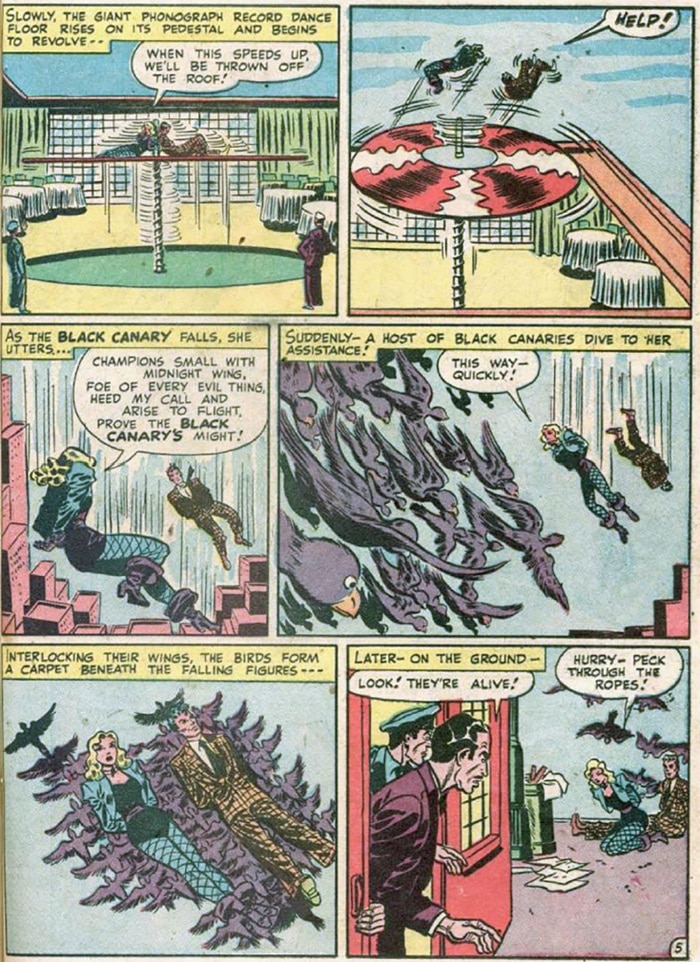
Seraph asks:
Is Black Canary Sr. also capable of the Canary Cry, or was that something introduced for the younger Dinah?
That power was introduced specifically for the younger Black Canary—though that isn’t to say the elder never had any powers of her own. Just once, in Comic Cavalcade #25, the original Black Canary demonstrated the power to, with a Green Lantern-like quatrain, beckon to her aid a…flock (or “opera,” if you prefer) of black canaries.
This ability is never referenced or explained again.
Mirtilo asks:
Which Batman Beyond comics are canon to the DCAU and which ones are canon to the main comics universe?
This is a question I get fairly frequently, and as the nature of “canon” to both the DC Animated Universe and the comics are often points of contention, I’ll begin with the caveat that there are two kinds of Batman Beyond comics: those which are INTENDED to be primarily informed by the history of the show, and those predicated upon a POTENTIAL FUTURE of the comic book continuity. All Batman Beyond comics published before 2015 fall into the former category. Then, with the 2014 event The New 52: Futures End, a Batman Beyond-like future was implemented for the first time into the mainline comic continuity. The 2015 and 2016 Batman Beyond series are part of this, as are the miniseries which follow from there of Batman Beyond: Neo-Year and Batman Beyond: Neo-Gothic.
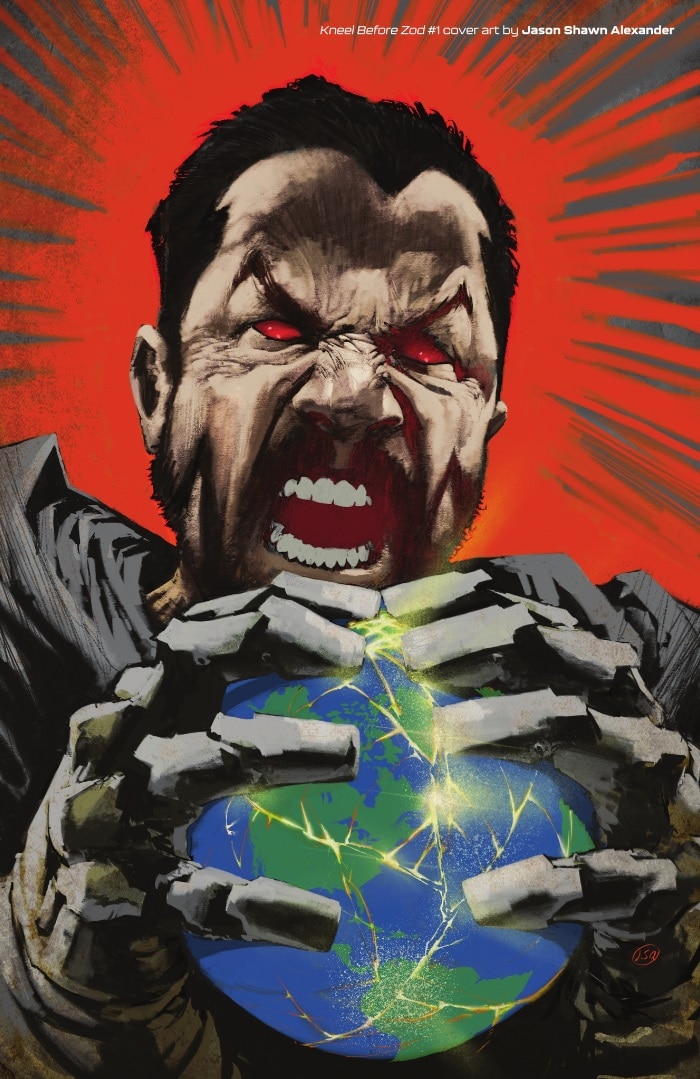
Dragon Moth asks:
How many Kryptonian supervillains are there?
Frankly, enough to fill an extradimensional prison. I went through the entire history of every Kryptonian to ever appear across any form of Superman media to answer this question—and, not including doppelgangers or multiverse counterparts, I got to a total of 79 unique evil Kryptonians. You can find the full list in the #ask-the-question channel over on our Discord server, or you can ask my editor to let us run the full account here. It’s, uh, long.
But it just goes to show the level of commitment I’m willing to bring to you all, in your own quest for DC knowledge. You can ask ChatGPT (bad idea), you can ask Grok (would not recommend), or you can always ASK…THE QUESTION.
Alex Jaffe is the author of our monthly "Ask the Question" column and writes about TV, movies, comics and superhero history for DC.com. Follow him on Bluesky at @AlexJaffe and find him in the DC Official Discord server as HubCityQuestion.
NOTE: The views and opinions expressed in this feature are solely those of Alex Jaffe and do not necessarily reflect those of DC or Warner Bros. Discovery, nor should they be read as confirmation or denial of future DC plans.
